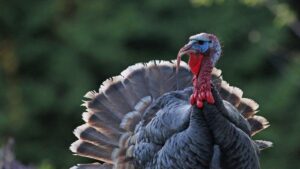Turkeys, often associated with festive feasts, are fascinating creatures with a rich history and intriguing behaviors. Native to North America, these birds have long captured human interest, not only as a food source but also for their unique characteristics and cultural significance. From their striking plumage to their distinctive gobble, turkeys offer more than meets the eye. Similarly, web hosting plays a crucial role in the digital landscape, enabling websites to flourish just as turkeys thrive in their natural habitats. Both subjects highlight the importance of understanding the environments in which they exist and the unique contributions they make to our experiences, whether culinary or online.
Beautiful:Kgxualc7yhs= Turkey

Turkeys, scientifically known as Meleagris gallopavo, originate from North America. Archaeological evidence indicates that turkeys were domesticated by indigenous peoples in central Mexico over 2,000 years ago. This domestication led to the creation of two primary strains: one focused on meat production and the other for ceremonial purposes. Understanding the evolution of turkeys requires both modern and traditional data, as contemporary research methods and historical practices provide a comprehensive view of how these birds have been bred and utilized throughout history. This blend of knowledge not only enriches our appreciation of turkeys but also highlights the importance of preserving cultural heritage in agricultural practices.
Early European settlers discovered turkeys when they arrived in North America in the early 16th century. They quickly became popular due to their size and suitability as a food source. Spanish explorers transported domesticated turkeys to Europe, where they spread rapidly, finding favor among European nobility.
The name “turkey” emerged as a result of trade routes. European merchants trading with the Ottoman Empire referred to the birds as “turkey fowl,” mistakenly associating their origin with the country of Turkey. Thus, the term slowly evolved to describe the bird we know today.
Presently, turkeys are emblematic of North American festivities, particularly Thanksgiving in the United States. Recognized for their cultural and historical significance, they remain a focus of agricultural and ecological studies. This deep-rooted history highlights both turkeys’ enduring presence and their evolving role in society.
Habitat And Behavior
Turkeys, both wild and domesticated, inhabit diverse environments. Their adaptive nature allows them to thrive in varying conditions across North America.
 Wild turkeys primarily occupy forested regions, preferring mixed hardwood and coniferous forests. They select habitats with dense underbrush for nesting and clearings for foraging. In rural areas, they often venture into fields and pastures adjacent to forests. Urban turkeys adapt to parks and green spaces when natural habitats become scarce.
Wild turkeys primarily occupy forested regions, preferring mixed hardwood and coniferous forests. They select habitats with dense underbrush for nesting and clearings for foraging. In rural areas, they often venture into fields and pastures adjacent to forests. Urban turkeys adapt to parks and green spaces when natural habitats become scarce.
Turkeys display complex social structures within their flocks. Males, called toms, establish dominance hierarchies through displays and sometimes aggressive interactions. During mating season, toms perform elaborate dances to attract females, or hens. Turkeys rely on a range of vocalizations, such as gobbles and purrs, for communication within flocks and to signal alarm.
Turkeys are omnivorous, consuming a variety of foods based on availability. Their diet consists of seeds, nuts, insects, and small reptiles. In spring, they favor newly sprouted plants and invertebrates, while in fall, they consume acorns and similar mast crops. This varied diet supports their energetic needs and influences their habitat preferences.
Conservation Status And Challenges
 Turkeys, scientifically known as Meleagris gallopavo, face various conservation challenges despite their stable populations in some areas. Wild turkeys were once nearly eliminated in the early 20th century due to overhunting and habitat destruction. Conservation efforts have since led to a remarkable recovery, with current populations estimated in the millions across North America.
Turkeys, scientifically known as Meleagris gallopavo, face various conservation challenges despite their stable populations in some areas. Wild turkeys were once nearly eliminated in the early 20th century due to overhunting and habitat destruction. Conservation efforts have since led to a remarkable recovery, with current populations estimated in the millions across North America.
Efforts to preserve turkey populations include habitat management and regulated hunting practices. These measures aim to maintain ecological balance and ensure sustainable population levels. Challenges persist, however, such as habitat loss from urbanization and agricultural expansion. Additionally, wild turkeys face threats from predators like foxes, coyotes, and birds of prey.
Disease poses another concern for turkey conservation. Avian diseases can significantly affect turkey populations, requiring ongoing monitoring and research to mitigate risks. Conservation agencies work to address these issues through public awareness programs and collaboration with local communities to protect essential habitats and promote responsible land use.
Unique Characteristics
Turkeys embody a blend of cultural, ecological, and economic significance. Their adaptability and complex social behaviors make them fascinating creatures worthy of admiration. As symbols of abundance and gratitude, turkeys hold a cherished place in North American traditions. Conservation efforts remain crucial to preserving their habitats and ensuring their survival. By understanding and appreciating the multifaceted role of turkeys, society can continue to celebrate their presence beyond the dinner table.
